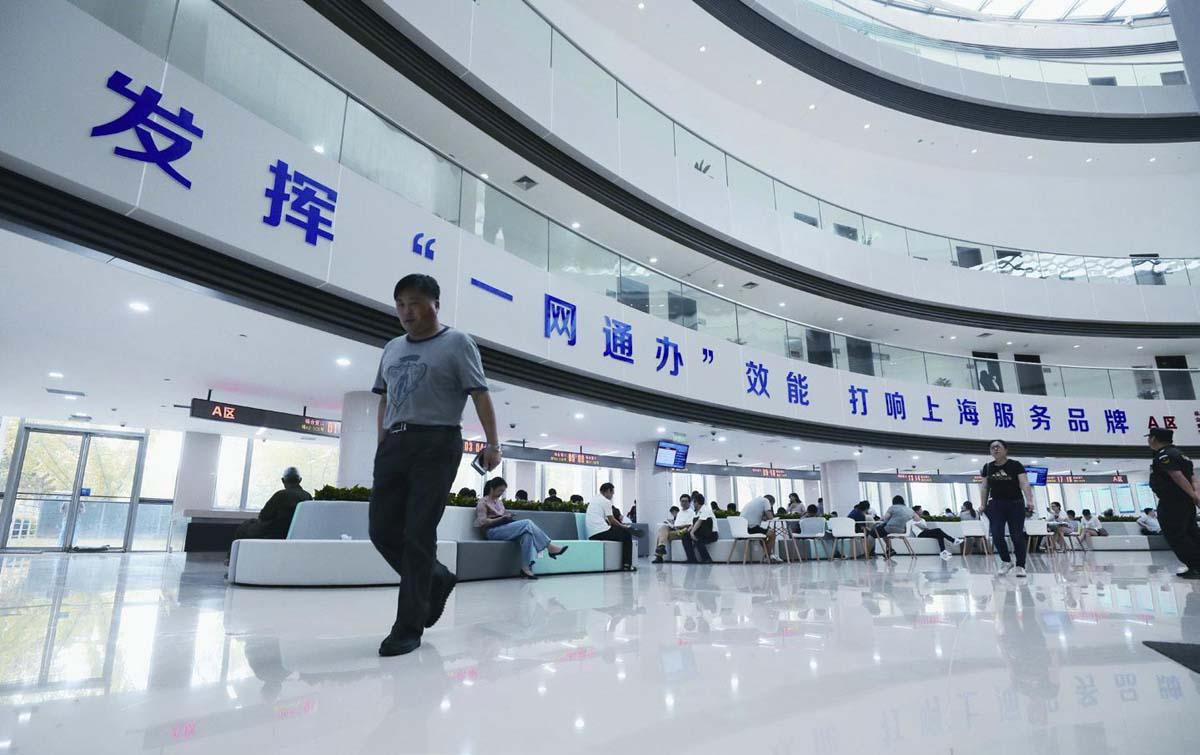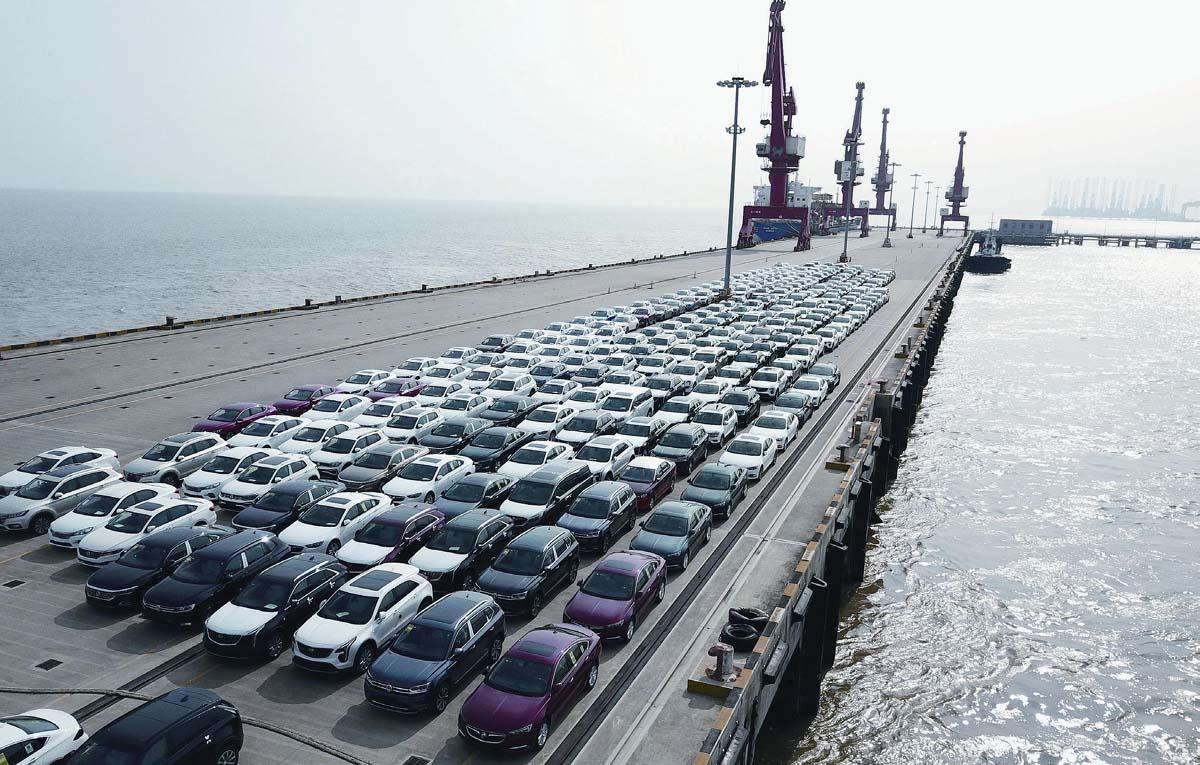Special Area,Special Initiative
By Wang Jun


The Lin-gang Special Area of the China(Shanghai) Pilot Free Trade Zone (FTZ) was offi cially unveiled on August 20 after an overall plan was issued by the State Council on August 6. The special area is one of the measures for advancing further opening up initiated by Chinese President Xi Jinping at the First China International Import Expo in November 2018.
According to the plan, the special area will be located south of the Dazhi River, east of Jinhui Port, on Xiaoyangshan Island and south of the Pudong International Airport. A section covering 119.5 square km that includes Nanhui New Town, the Lingang Industrial Area, Xiaoyangshan Island and south of the Pudong International Airport will be launched fi rst.
“The establishment of the special area demonstrates Chinas stand on all-around opening up and takes the initiative in leading the sound development of economic globalization,” said Li Qiang, Secretary of the Shanghai Municipal Committee of the Communist Party of China, at the inauguration ceremony of the Lin-gang Special Area.
Expansion and progress
The special area is set to match the standards of the most competitive FTZs in the world, implement opening-up policies and systems with strong global market competitiveness and intensify the risk stress test for the open economy system, said the State Council plan.
The area will be built into a special economic function zone with global infl uence and competitiveness to better serve the countrys overall opening-up strategy.
“The plan carries out the requirement of high-quality development, is set to match international standards and hold the bottom line of risk control,” said Wang Shouwen, Vice Minister of Commerce and Deputy China International Trade Representative, at a press briefi ng held by the State Council Information Offi ce (SCIO) on August 6.
Compared to previously established FTZs, the special area has clearer and higher positioning and more diversified strategic tasks, highlighting industrial development, Wang explained.
“By accelerating the establishment of systems that adopt international rules, the special area will better meet the demand of transforming from opening up based on free flows of commodities and factors to rule-based institutional opening up,” Wang said.
“The special area is not simply an expansion of the pilot FTZ, it is a fundamental institutional innovation in all rounds and at higher levels,” said Chen Yin, Executive Vice Mayor of Shanghai, at the press briefi ng.
Amid the rise of trade protectionism, the creation of the special area demonstrates the countrys firm determination to expand opening up and will serve the future development of the Shanghai FTZ and promote the high-quality development of China, said Zhang Jianping, head of the Center for Regional Economic Cooperation of the Chinese Academy of International Trade and Economic Cooperation under the Ministry of Commerce, in an interview with Xinhua News Agency.

New opportunities
Under the plan, the special area will feature free investment, free trade, free flow of capital and free employment.
A highly competitive taxation system and policies will be adopted. According to the plan, corporate income tax will be reduced by 15 percent within fi ve years of establishment for qualified businesses in manufacturing as well as research and development in key fi elds such as integrated circuits, artificial intelligence, biomedicine and civil aviation. In comparison, the standard corporate income tax rate for both domestic and foreign-invested enterprises in China is now 25 percent.
“Covering a large and interconnected area, the Lin-gang Special Area has favorable conditions for attracting key investment projects, which will be of great signifi cance to improving Chinas industrial competitiveness and enhancing the countrys science and technology innovation capability amid a complicated and volatile external environment,” Yin Chen, Secretary General of the Shanghai Free Trade Zone Comprehensive Research Institute with Fudan University, told Xinhua.

Breakthroughs
He Wanpeng, head of the Shanghai Qiantan New Industry Research Institute, said Shanghai took the lead in the country in setting up a pilot FTZ. At the time, the FTZ focused on facilitation of investment, trade, fi nancing and supervision. But in the plan for the special area, the focus will shift to liberalization.
“The change of one word indicates that China has made substantive leaps in expanding opening up,” He told Peoples Daily.
Zhou Guoping, Deputy Director of the Development Research Center of the Shanghai Municipal Peoples Government, told the online media outlet ThePaper.cn that the existing areas of the Shanghai FTZ focus more on trade and investment facilitation measures featuring simplified procedures and a reduction in costs, while the special area will stress liberalization and seek to make groundbreaking institutional innovation on a deeper level.
Liberalization and facilitation have an essential difference, said Sun Yunxin, Deputy Director of the Research Institute for the Shanghai FTZ at the Shanghai University of Finance and Economics, in an interview with Peoples Daily.
According to Sun, facilitation means the relaxation of existing restrictive policies and the coordination of different government departments, while liberalization means the promotion of comprehensive free flows of production factors, which requires completely new management systems concerning the free flow of capital, technologies, personnel and information. This will stimulate some key reforms in the special area, bringing great advances to reform and opening up in Shanghai and the entire country.
“It is expected that Chinas opening up will be strengthened and accelerated,”Wang Xiaosong, a research fellow with the National Academy of Development and Strategy of Renmin University of China, told Xinhua.
However, risks brought about by a higher level of opening up should not be ignored, Zhou said. In his opinion, there are two major risks in the opening up of the special area, namely, the movement of goods and personnel, and the cross-border flow of capital. He suggested authorities design multidimensional risk management systems and provide measures such as making credit ratings an important basis for enterprises to enjoy favorable policies, which will be conducive to improving the capability of risk prevention.

